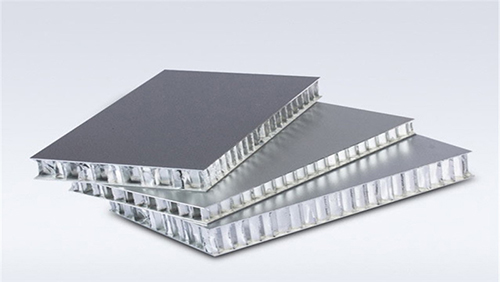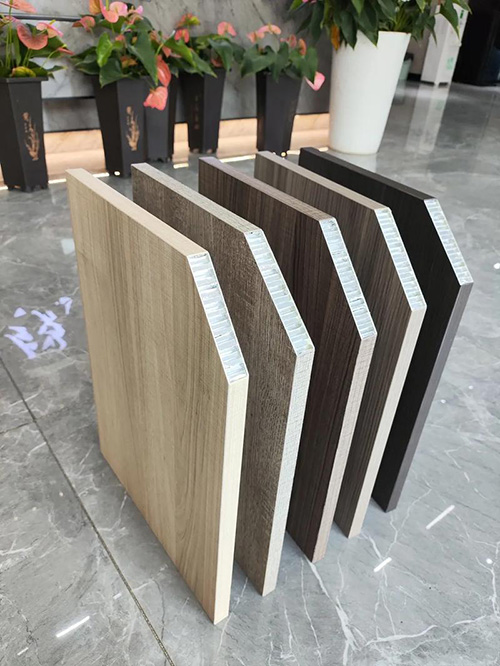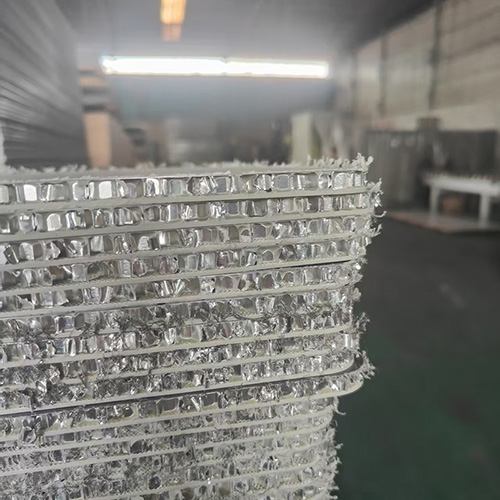Why have aluminum honeycomb panels become so popular recently? What materials are they made of, and what are their pros and cons? Let’s start by uncovering their historical trajectory. Initially, aluminum honeycomb panels were used for cabinet doors due to aluminum’s lightweight, moisture-resistant, fireproof, and insect-repellent properties, making them highly sought after. Gradually, as manufacturing techniques advanced, researchers began exploring their use for walls and ceilings, which suddenly opened up a new market for these panels.
Aluminum Honeycomb Panels: Why So Popular?
In today’s interior design landscape, aluminum honeycomb panels are widely used in both residential spaces (e.g., apartments) and commercial settings (e.g., billiard halls, hotels). Their unique material composition and exceptional performance have earned them immense popularity. But what exactly are they made of? Let’s dive in with Vogesen’s editor, A-Tang, as your guide.
I. Materials and Types of Aluminum Honeycomb Panels
The name "aluminum honeycomb panel" hints at its primary material: aluminum. Specifically, it consists of two aluminum face sheets bonded to a honeycomb-shaped aluminum core under high temperature and pressure. This innovative structure delivers remarkable properties.

1. All-Aluminum Honeycomb Panels
These feature aluminum face sheets and an aluminum honeycomb core—the most searched-for and market-dominant type. While their performance is outstanding, their downside is cost. For ceilings, thinner aluminum sheets (0.25mm) are affordable and ultra-lightweight, but they’re unsuitable for walls due to fragility (denting easily) and inability to support laminates. Wall applications require thicker sheets (≥0.65mm), which are prohibitively expensive, often limited to luxury villas.

2. Aluminum Alloy Honeycomb Panels
To address pure aluminum’s softness and high cost, alloy face sheets paired with an aluminum honeycomb core emerged. These are more durable, corrosion-resistant, and easier to shape. Surface treatments (e.g., spraying, laminating) enhance aesthetics and longevity, though they remain costly for interior decor.

3. SPC Aluminum Honeycomb Panels
These combine SPC (Stone Plastic Composite) face sheets with an aluminum honeycomb core, offering a budget-friendly yet high-performance option for walls, ceilings, and both residential/commercial projects. They support diverse laminate finishes for customizable looks, though market awareness remains limited.
Honeycomb Core Structure
The core comprises hexagonal aluminum foil cells (0.04–0.06mm thick, 5–6mm cell size). This design drastically reduces weight while boosting strength and rigidity.
II. Performance Advantages
Aluminum honeycomb panels owe their popularity to these standout features:
Lightweight & High Strength
Weighing just 1/5 of conventional panels at the same thickness, they match or exceed their bending resistance and load-bearing capacity.Flat Surface Stability
Synchronized thermal expansion of face sheets and air circulation through the core prevent warping, ensuring large-scale aesthetic consistency.Sound & Thermal Insulation
The air-trapping蜂窝结构 achieves >30dB soundproofing and thermal resistance of 0.02 (㎡·K/W).Eco-Friendly & Energy-Efficient
Made from recyclable, non-toxic materials, they reduce energy consumption via superior insulation.Easy Processing & Installation
They can be cut, bent, drilled, and installed via adhesive backing or龙骨 (dragon bone) dry-hanging systems.
Conclusion
Despite a sluggish real estate market, demand for aluminum honeycomb panels continues to rise, reflecting growing emphasis on living standards. With their unmatched advantages, these panels are poised for even broader applications in the future.
Scan to follow & learn more


